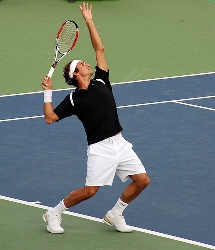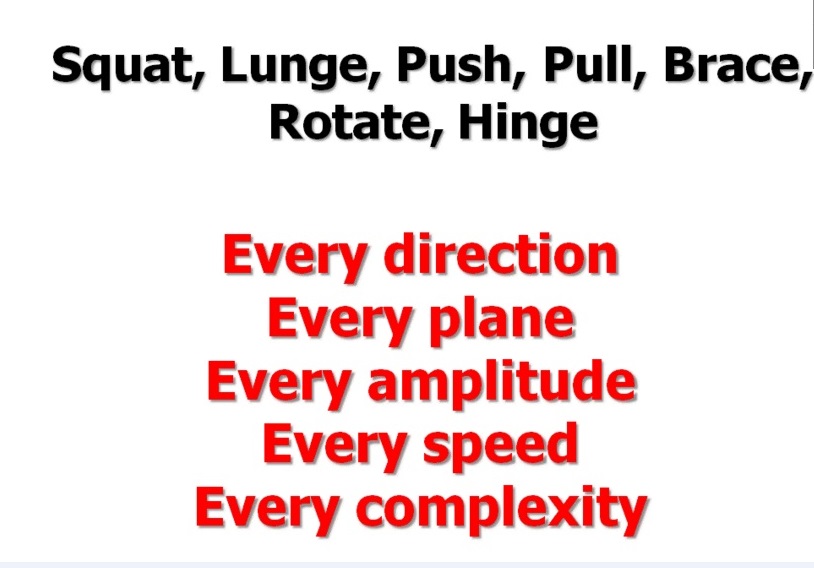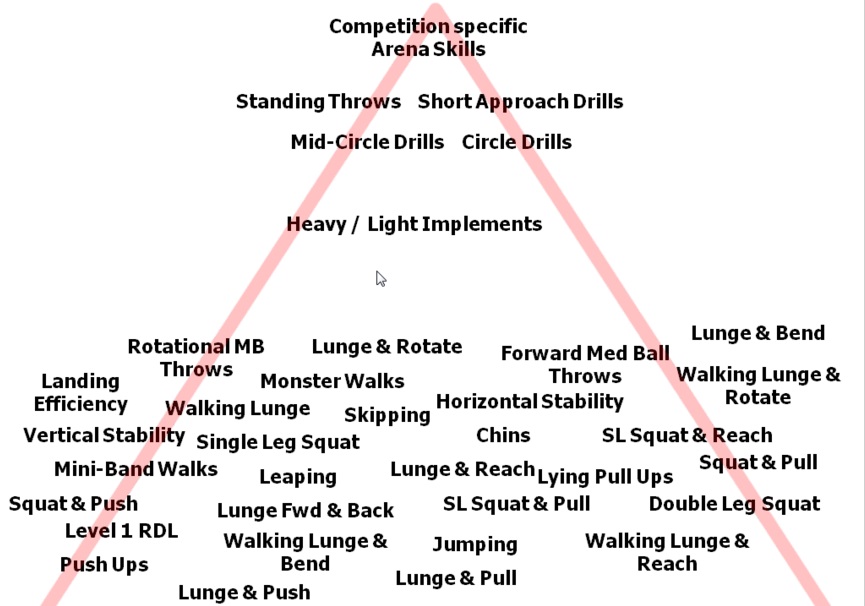S&C Education Conference 2014 Kelvin Giles on the Overhead Athlete
This weekend saw the launch of the first Online S&C Education Conference (by webinar), hosted by my friend and colleague, Brendan Chaplin. Unfortunately I didn’t manage to get to hear all 12 speakers this week due to work commitments but I wasn’t going to miss any of the presentations over the weekend! Given that a lot of my time is spent in the sport of Tennis I was really looking forward to hearing what a mentor of mine, Kelvin Giles had to say on the topic of the Overhead athlete.
He started off by talking about the different sports that we could be discussing when we say ‘Overhead athlete.’
[column width=”32%” padding=”2%”]
[/column]
[column width=”32%” padding=”2%”]
[/column]
[column width=”32%” padding=”0″]
[/column][end_columns]
Kelvin also gave examples of sports where they might not be throwing an implement but there is a clear action of their arms being away from their body such as:
- Swimming
- Goal keeping
- Rock climbing
- Rowing
Kelvin then went on to say that while he understands that a lot of people might be expecting him to discuss shoulder pathologies and shoulder return to play strategies etc, he was actually going to talk about the bigger picture.
PREOCCUPIED WITH THE ROTATOR CUFF!
In Kelvin’s opinion we get very preoccupied with looking at the rotator cuff. Now understandably we want to reduce the occurrence of shoulder injuries which are prevalent in a lot of sports BUT rather than focus on the symptoms and have a reductionist approach, we need to look at the bigger picture and understand why athletes are getting injured!!
Kelvin is a passionate advocate of the need to follow a movement efficiency journey that starts with developing basic movement patterns (squat, lunge, push, pull, brace, rotate, gait). Vern has been quoted many times before:
”Train movements, NOT Muscles!”
He went on to discuss the human body as an amazing thing that not only has joint articulations that require different amounts of MOBILITY and STABILITY (see Mike Boyle’s popularisation of the ‘Joint by Joint’ approach) but also connective tissue slings that mean movements at one place have an affect on the ENTIRE body!!
A lot of the problems that occur up the kinetic chain are due to a lack of movement efficiency from ‘toe nails to finger nails.’ We need to master these basic physical competencies!!!
Kelvin referred to various research papers supporting the point that shoulder health is directly related to movement efficiency at other places in the body (such as thoracic mobility).
The Overarm Throw
Then Kelvin showed a series of videos of children learning to ‘solve the movement puzzle’ of throwing a ball at the wall above a marked line that was of varying distances away from the child. The younger children started off throwing a ball around 12 feet away from the wall, and were told to throw the ball over the marked line that was at around head height.
Initially the youngest child would have many faults in their throwing action- including being square on, having the elbow in front of the shoulder and so on. But as the children advanced and moved first 15 and then 20 and then 25 feet away they were able to solve the movement puzzle by improving the action until you get the action see in the images above where it pretty much follows the ‘technical model.’
Now in the presentation the children being shown were older with each progression as we moved through four stages to get to the ‘final skill ,’ so this journey for a single child may take months or years to get to that stage. What I liked was that there was minimal explicit coaching- Kelvin said that the coach absolutely would NOT ask the 6 year old girl who was throwing square on, to move side on- he would let her figure it out for herself.
Role of Implicit Coaching
The idea of NOT correcting the young girl to get side on might ruffle a few feathers with coaches as this might go against your instincts to correct poor movement mechanics. I personally think that with all these things there needs to be a balance between letting them work completely independently and risking possibly ingraining BAD HABITS and coaches telling them exactly what to do from the BEGINNING.
I think you definitely need to have a skill applied in the sport context, so letting the athlete determine information about how far the ball went in relation to the mark on the wall is important. Frans Bosch in his UKSCA conference presentation referred to this as ‘Knowledge of Results (KR).’ I like to call this setting a ‘Target’ for the athlete. But the coaching should be more towards ‘cues’ that will help them focus on the result:
Focus their attention on something external like- ”notice how high the ball travelled!! Do you think you could send it a bit higher??”
Hopefully adding a constraint such as asking them to throw the ball from further back will get them to figure out that they need to get side on to better transfer weight through the legs and hips!!
Target versus an Outcome
The point I am going to make below didn’t actually get discussed by Kelvin but I wanted to make the point as I think it is important to clarify this.
In the above example I think of the task of throwing the ball over the marked line on the wall as a ‘Target.’ Equally it could be asking them to throw the ball 20m, or sprint 20m in 3.50-seconds. These are performance outcomes and I think all athletes need to start getting used to working with targets early to create better attention and intent levels.
Where we have issues is when there is a score attached to the performance outcome, such as if you hit the ball over the marker you get a point for your team. When there is a perceived pressure to win or a threat of losing , this is when we see the mental side of skills come into play. Dealing with pressure is so key to transferring from skill practice to actual performance.
Now like with all aspects of coaching the secret is in the blend. I think all athletes of all levels should have some exposure of applying their skills under score pressure. For me this is a gradual process but there is a need to always have a Target and at some point also have a score pressure where they will be a winner and a loser.
Earn the Right through Physical Literacy
Getting back to Kelvin’s talk he went on to examine the reasons why our athletes get injuries while performing athletic skills such as the throw. He mentioned a few different issues. The first one is an obvious one but hugely important and often overlooked these days. This is the ability to develop a deep and wide reservoir of physical literacy.
Athletes have to earn the right to do more specific throwing practice. Physical literacy is build on a foundation of physical competencies (Squat, Lunge, Push, Pull, Brace, Rotate, Gait). These are then connected and integrated to create Movement Skills. On top of Movement skills you build Sports skills. It has to be done like that.
Physical Competencies
+
Movement skills
+
Sports skills
=
PHYSICAL LITERACY
The Volume Trap
Kelvin went on to say that a lot of well intended coaches will often introduce a lot of physio orientated rotator cuff work with bands and hand weights etc- BUT BE CAREFUL that you are not adding stress to stress!! If you add these PREHAB type activities to a throwing programme then you had better be taking something away. Yes we know our athletes need to throw but if they are doing even more prehab type actions you need to reduce the throwing volume, or do the prehab during a period in the year when throwing volume is lower. He personally prefers more dynamic shoulder warm-ups like the one he shows here of Tracey Fober using some power balls to warm-up the shoulder.
Finally, Kelvin did a great job of showing how the we need to build the journey up by exploring more and more challenging movement puzzles that take us closer and closer to the performance skill.
And all these movements should be experienced using different constraints such as:
Well that about sums up Kelvin’s talk. As ever Kelvin was extremely passionate about this topic of the journey to movement efficiency and I was really glad to hear him talk. I mention some of the work Kelvin introduced me to on assessing movement efficiency in my new Ebook, ‘Speed, Agility & Quickness training for Sports;’ you can find out more information HERE.
I hoped you enjoyed the Post! Speak to you soon.
Daz Drake









